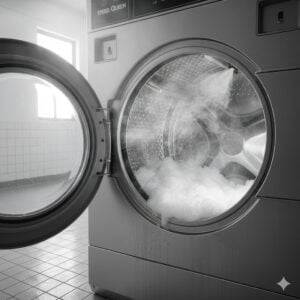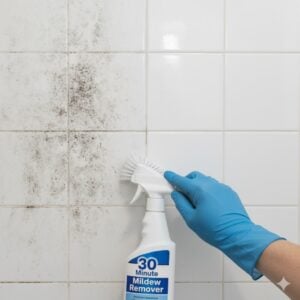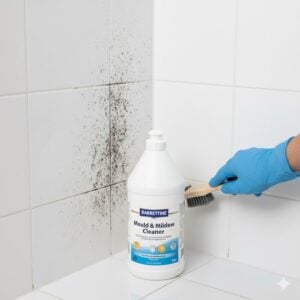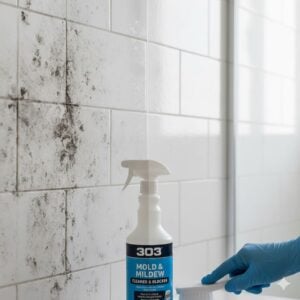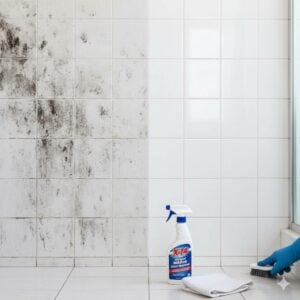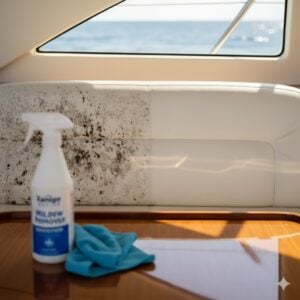Have you noticed black mold growing around your shower seals, tile edges, or kitchen sink corners? These small, tight spaces are often where mold hides—and it’s not always easy to treat with regular spray. That’s why many people in Dubai and other Emirates are now using mold gel as a targeted solution.
Mold gel is a thick cleaner designed to stick to surfaces where liquid sprays would drip off. It’s made to cling to tricky spots like silicone joints, tile grout, and shower door seals, allowing the active ingredients to work longer and more effectively. And for areas prone to recurring mold, this can make a big difference.
In this article, we’ll guide you through what mold gel is, where to use it, how to apply it safely, and when to consider calling a mold professional like Bio-On UAE if things go beyond DIY cleaning.
Table of Contents
Toggle1. What Is Mold Gel and How Is It Different from Spray?
Mold gel is a semi-thick cleaning solution that contains mold-killing agents—usually a mix of chlorine-based or hydrogen peroxide-based ingredients—suspended in a gel base. The purpose of the gel is to stay in place and slowly release the active ingredients over time.
Here’s how it’s different from regular mold spray:
- Gel sticks, spray drips: Sprays are great for open walls or floors, but they run off vertical surfaces. Gel stays right where you put it.
- Longer contact time: The gel sits on moldy areas for hours, breaking down black stains more thoroughly.
- Targeted application: You can apply mold gel precisely along edges, corners, and lines where mold often grows but is hard to reach with a cloth.
This makes mold gel a preferred option in bathrooms, kitchens, and areas where mold keeps returning along sealants or cracks.
2. Where Mold Gel Works Best (And Where It Doesn’t)
While mold gel can be a game-changer for targeted cleaning, it’s not a one-size-fits-all solution. It’s meant for surface-level mold, not deep contamination or airborne spores.
Best places to use mold gel:
- Silicone edges around sinks, bathtubs, and showers
- Grout lines between bathroom or kitchen tiles
- Window sills and sliding door tracks
- Rubber seals of washing machines or dishwashers
Where mold gel doesn’t work well:
- Large wall or ceiling areas affected by moisture inside the structure
- Behind furniture or inside AC vents where mold is airborne or embedded
- On porous materials like drywall or untreated wood, where mold penetrates deep
If you apply mold gel but notice the mold keeps coming back, or the smell doesn’t go away, it may be a sign that the issue is deeper than just surface buildup. That’s when calling a professional like Bio-On is your safest move.
3. How to Use Mold Gel: Step-by-Step
Using mold gel is straightforward, but it works best when applied with care and patience. Here’s a step-by-step guide to help you get it right and avoid mistakes:
- Clean and dry the area: Wipe off any loose dirt, moisture, or soap residue from the surface. Mold gel sticks best to dry surfaces.
- Apply the gel generously: Squeeze the gel directly onto the moldy area in a thick line. No need to rub it in—just make sure it covers the mold fully.
- Let it sit for hours: Most products recommend waiting 6–12 hours, or even overnight. This gives the gel time to penetrate the mold stains and break them down.
- Wipe away the residue: Use a damp cloth or sponge to remove the gel. If mold stains remain, repeat the process or scrub lightly.
- Rinse and dry: Once cleaned, rinse the area thoroughly with water and dry it completely to prevent new mold from forming.
Tips for safe use:
- Wear gloves and keep the area ventilated—some gels contain strong chemicals.
- Don’t mix mold gel with other cleaners like vinegar or bleach—it could cause dangerous reactions.
- Keep away from children and pets while the gel is working.
Many users in the UAE find mold gel ideal for areas that are always damp—like under kitchen sinks or bathroom corners. Just be sure to follow the instructions on your product label for best results.
4. Pros and Cons of Using Mold Gel at Home
Mold gel can be a helpful tool for regular home maintenance, but like any cleaner, it has its strengths and limits. Here’s a breakdown to help you decide if it’s the right fit:
✔ Pros of Mold Gel
- No dripping: Stays put on vertical surfaces like walls, tiles, and rubber seals.
- Deep stain treatment: Effective at removing long-standing black mold marks on caulking and grout.
- Minimal effort: Just apply, wait, and wipe—no heavy scrubbing needed.
- Targeted cleaning: Ideal for treating small, stubborn spots that sprays can’t reach well.
✘ Cons of Mold Gel
- Not for big mold problems: Can’t treat hidden mold, structural damage, or airborne spores.
- Long waiting time: Needs hours to work, which may be inconvenient for busy areas.
- Chemical content: Some products have strong fumes and should be used with care.
- Surface-only: Doesn’t soak into porous materials like drywall or wood.
So while mold gel is great for cleaning surface-level issues in tight spaces, it’s not a full solution for homes with ongoing humidity or deep mold growth. That’s when you might want to look into professional mold remediation.
5. What Bio-On UAE Recommends for Stubborn Mold
At Bio-On UAE, we see mold gel as a smart tool—but only for surface-level maintenance. If you spot black mold around your bathtub or sink, a gel can help. But if the mold keeps coming back, smells linger, or the problem spreads beyond corners, it’s time to go deeper.
Our expert mold remediation team uses a complete approach to tackle the real cause of mold. That means:
- Inspecting moisture sources like hidden leaks or poor ventilation
- Using professional-grade gel and spray agents that are eco-safe and municipality-approved
- Removing airborne spores with HEPA filters and fogging tools
- Applying preventive treatments so mold doesn’t return next month
Many clients across Dubai, Sharjah, and Abu Dhabi have tried gels, sprays—even DIY mixes—but still ended up needing full remediation. That’s why we recommend using mold gel as a first step, and reaching out for help if the issue doesn’t stop. Just click the contact button on the right-middle of this post to chat with our support team—we’re available 24/7.
Conclusion
Mold gel is a practical, simple option to treat mold in narrow and tricky places. If your bathroom corners or kitchen tiles have started to turn black, this might be all you need to clear it up. But remember: gels only treat what’s visible on the surface. Mold inside your walls, AC vents, or ceilings won’t go away with gel alone.
At Bio-On UAE, we combine targeted products like mold gel with deep-dive inspections and eco-friendly remediation. Whether you want to try cleaning it yourself or want us to take over, you can count on us. Click the contact button on the right-middle of this post—we’ll help you breathe easier and stay mold-free, for good.









